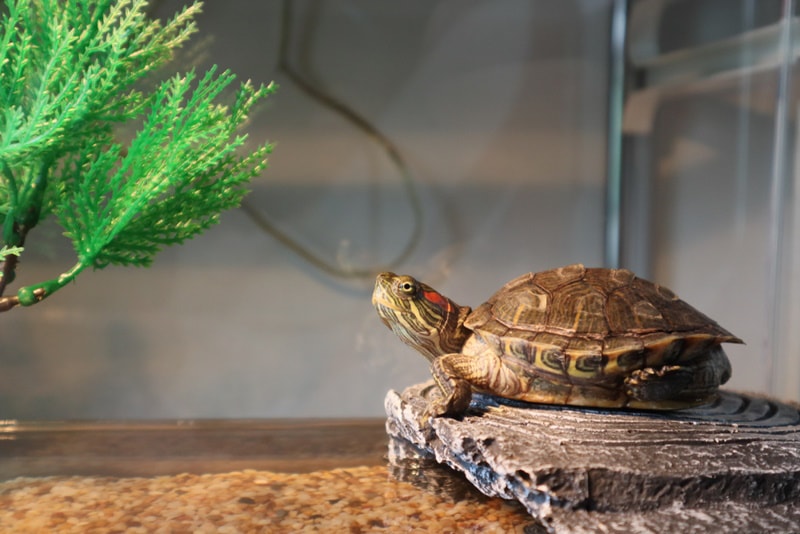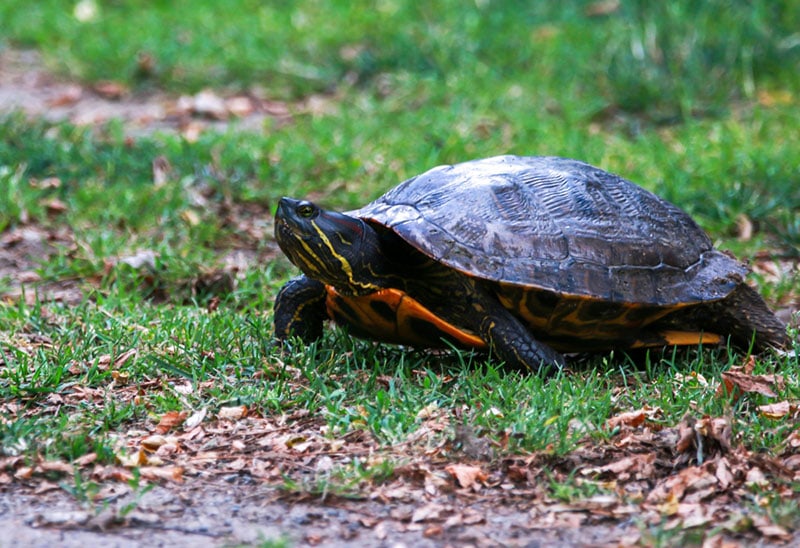How Long Do Red-Footed Tortoise Live? Vet Reviewed Lifespan, Data & Care
By Jessica Kim
Updated on
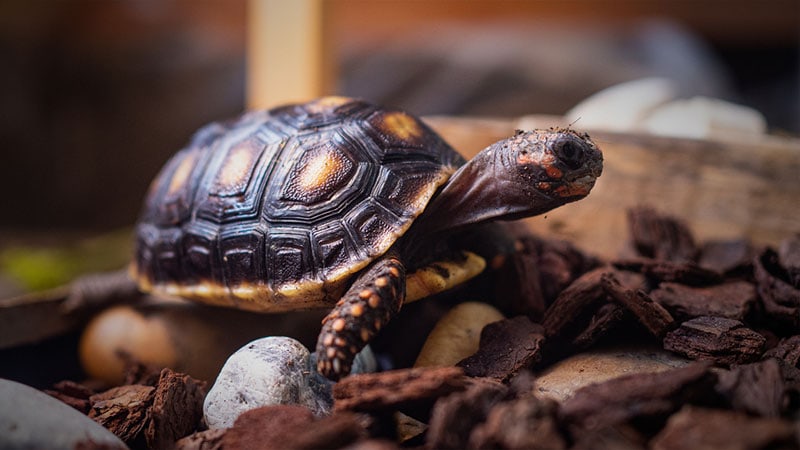
Click to Skip Ahead
Red-Footed Tortoises (Chelonoidis carbonaria) are some of the most popular pet tortoises in the United States. They originate from South America and can be found in regions from Panama to Argentina. Some populations of wild Red-Footed Tortoises can also be found in Trinidad and Barbados.
Pet Red-Footed Tortoises can live for 50 years and beyond, so it’s important for prospective owners to be aware of the level of commitment they require before taking them on as pets. Here are some essential things you need to know about Red-Footed Tortoises’ lifespans and how you can help them live long and healthy lives.
Red-Footed Tortoise Average Lifespan
In captivity and as pets, Red-Footed Tortoises can live between 40–50 years. However, some are known to live beyond 50 years. Pet Red-Footed Tortoises are at lower risk of encountering their natural predators, and they have daily access to food and water. When properly cared for, they have the potential to live much longer than their wild counterparts.
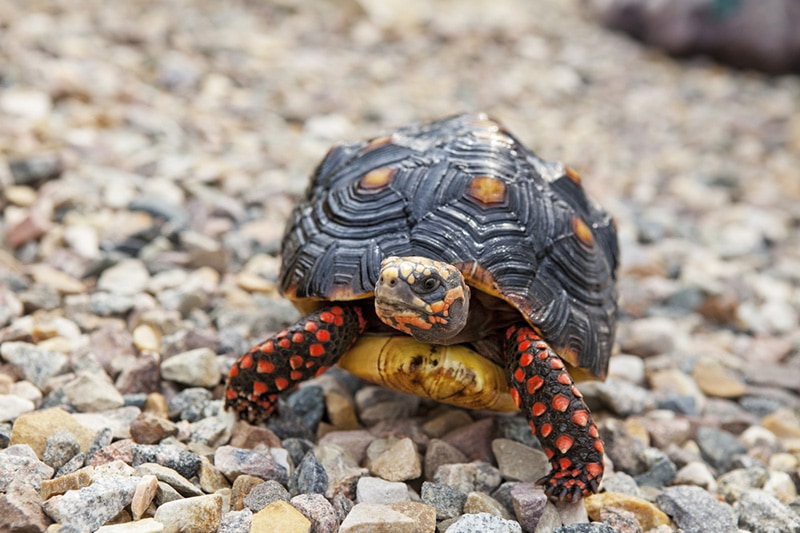
How Long Do Red-Footed Tortoises Live in the Wild?
Red-Footed Tortoises in the wild tend to have shorter lifespans and typically live between 20–40 years. Wild Red-Footed Tortoises may not have as consistent access to food, water, and shelter. They also have to be wary of natural predators, including foxes, coyotes, and snakes.
How to Care for Your Red-Footed Tortoise for a Long Lifespan?
Feeding & Diet
Red-Footed Tortoises have mostly herbivorous diets. The majority of their diet (70%) consists of dark leafy greens and weeds, including dandelion greens, mustard greens, romaine lettuce, watercress, and Swiss chard. They can also eat some vegetables occasionally, like broccoli, carrots, and zucchini.
Red-Footed Tortoises can eat some fruit (around 30%), but fruit should be given in smaller quantities due to their higher sugar content. Some fruits that Red-Footed Tortoises can safely eat in moderation are berries, apples, plums, and peaches.
You can also feed Red-Footed Tortoises small insects, like wax worms, crickets, and earthworms. These insects are a good source of protein, but they should be fed only on occasion and in moderation. Too much protein can be detrimental to a tortoise’s health and can cause health issues like shell pyramiding.
It’s also important to be mindful of your Red-Footed Tortoise’s calcium intake. You can find some commercial tortoise pellets that are enriched with calcium, or you can sprinkle supplemental calcium powder over food 2–3 times a week. The ratio of calcium to phosphorus is very important for skeletal health of tortoises and should be in the region of at least 2:1 in adult tortoises.
You can feed your Red-Footed Tortoise daily and leave food out for 15–30 minutes. Any remaining food should be cleared away to prevent overeating. As a general rule of thumb, Red-Footed Tortoises can eat portion sizes that match the sizes of their shells.

Environment
While younger Red-Footed Tortoises can live indoors, fully mature Red-Footed Tortoises do best living in outdoor enclosures if your climate is a good fit for them. They require moderate temperatures that are between 75– 80°F and a basking area with UVB lighting that’s set between 90–95°F.
Humidity is another important factor. Ideal humidity levels for Red-Footed Tortoises are between 60%–80%. Choosing substrates that absorb moisture can help you regulate humidity levels. You can also spray the enclosure daily or invest in a misting system if the climate you live in is too dry.
When it comes to the enclosure itself, make sure to keep Red-Footed Tortoises in fully fenced areas that are at least 30–40 square feet and at least 2 feet tall. It’s better to have solid fences rather than wire fences to prevent escapes.
Enclosures should have a layer of soft substrate that enables Red-Footed Tortoises to dig and burrow. Red-Footed Tortoises will also appreciate having shelter or a hide box they can retreat to at any time. When it comes to greenery, it’s better to choose real plants over artificial ones. Just make sure that the plants you choose aren’t toxic to Red-Footed Tortoises.
Care
Red-Footed Tortoises are fairly low-maintenance reptile pets but still require knowledge of their species requirements. They’re typically docile, but they don’t particularly enjoy being handled, especially the older ones. Some of the key things to be mindful of are diet, temperature, and humidity levels. Meeting these needs and requirements reduces the risks of certain health issues.
Red-Footed Tortoises like to explore and forage. So, they’ll appreciate having food and small amounts of treats hidden in various parts of their enclosure for them to discover.

Cleaning
It’s important to keep enclosures clean to prevent the spread of bacteria and diseases. Make sure to spot-clean any waste and refresh water pans every day. Pieces inside indoor enclosures should be scrubbed clean once a week, and the substrate should be switched out weekly.
Adult Red-Footed Tortoises can benefit from weekly baths. Baths help them stay hydrated and remove any dirt or dust from their shells. They can also help some tortoises pass their waste. When bathing Red-Footed Tortoises, fill a shallow basin with lukewarm water. The water level shouldn’t rise above the bottom of the Red-Footed Tortoise’s shell. You can use a soft bristle brush and cotton swabs to gently scrub dirt off your tortoise. Your tortoise should always remain upright, as flipping your tortoise to his side or back can stress him out. It’s also unnecessary to use any kind of soap to wash your tortoise.
Pairing/Breeding
Red-Footed Tortoises can live harmoniously with other tortoises, but males can become territorial if they’re trying to attract a mate. It’s best to leave breeding to the experts, as caring for eggs and hatchlings requires a lot of attention and effort.
Healthcare
Whether you bring home a baby Red-Footed Tortoise or adopt an older one, make sure to schedule an appointment with an exotic pet veterinarian to conduct a physical exam. The veterinarian can also provide helpful care information and estimates of your tortoise’s age.
Routine annual checkups are recommended for Red-Footed Tortoises. If they get too large to transport, you can always look to see if there are any traveling veterinarians in your area.
The Life Stages of a Red-Footed Tortoise
Red-Footed Tortoise eggs have an incubation period of about 150 days. Juvenile Red-Footed Tortoises will continue to grow and reach sexual maturity when they’re about 5 years old. They can continue to grow for several more years, and most Red-Footed Tortoises reach full adulthood when they’re about 10 years old.
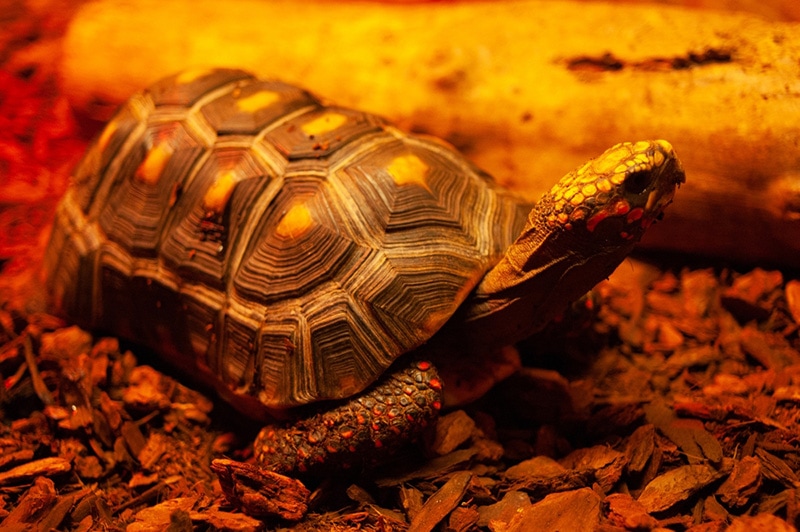
How to Tell Your Red-Footed Tortoise’s Age
Contrary to popular belief, the growth rings around a tortoise’s scutes aren’t accurate indicators of age. The best way to tell a Red-Footed Tortoise’s age is by size. Red-Footed Tortoises can grow up to 13.5 inches in length and weigh between 20–30 pounds. Keep in mind that if you adopt an older Red-Footed Tortoise, it’s much more difficult to determine the age because there are very few indicators you can look for. You may be able to get some clues from their shells. Much older Red-Footed Tortoises can have more weathered shells with scratches on them.
Conclusion
In general, pet Red-Footed Tortoises have lifespans that are between 40–50 years. Different factors, like diet, genetics, and habitats, can all affect lifespan. Being mindful of their essential care needs can increase the likelihood of helping them live long lives.
Featured Image Credit: fullframes, Shutterstock


